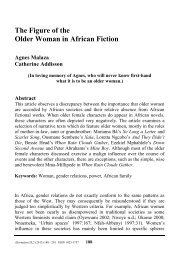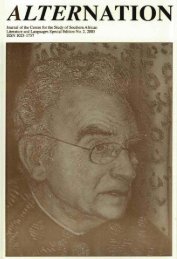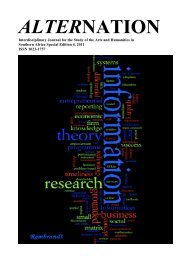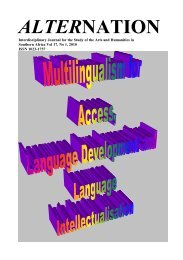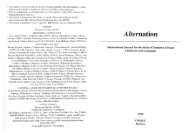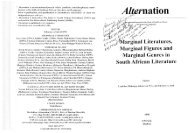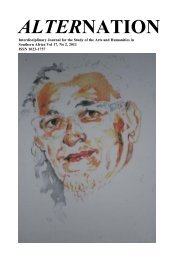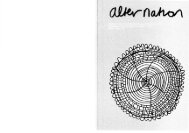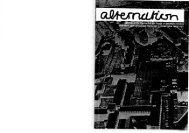Re-reading The Purloined Letter - Alternation Journal
Re-reading The Purloined Letter - Alternation Journal
Re-reading The Purloined Letter - Alternation Journal
Create successful ePaper yourself
Turn your PDF publications into a flip-book with our unique Google optimized e-Paper software.
Pravina Pillay<br />
direct application of masterful ‘codes’. A suspicion of mastery and<br />
knowledge is, then, crucial to how we understand Lacan and how Lacan<br />
suggests ways of understanding the text—even, or perhaps especially,<br />
difficult texts. Dupin then approaches the problem of how to find the letter<br />
as Lacanian analysis addresses a difficult analytic situation, and we as<br />
Lacanian readers should approach an obscure or ‘ungiving’ text not through<br />
the prior knowledge and the desire to master, conquer, or solve the mystery<br />
through whatever form of power, but by entering into the mystery’s own<br />
codes and strategies, opening it up from within and using the tools it<br />
provides.<br />
It is the loss within the story, and the circulation of the lost object as<br />
its loss is replayed, which is fundamental to Lacan’s <strong>reading</strong> of Poe through<br />
Beyond the Pleasure Principle—the movement and circulation, rather than<br />
content and truth are the key terms. Thus, Lacan’s project is to rework<br />
Freudian phases of human development from infancy onwards, emphasizing<br />
the interconnection of the subject’s entry into language and the development<br />
of gender identification. Lacanian psychoanalysis is consequently sometimes<br />
known as ‘structural psychoanalysis’, and its critical focus is not authorial<br />
symptoms breaking through on the page, or the behaviour of characters, but<br />
the circulation of signs in the text.<br />
Williams (1995:59) points out that Lacan’s importance for literary<br />
criticism is not simply that he offers a superannuated theory of gender and<br />
subjectivity but that he brings a theory of language to his <strong>reading</strong> of key<br />
Freudian concepts of sexuality and the psyche. <strong>Re</strong>working the basic<br />
Freudian models of Oedipal development and castration anxiety, he maps<br />
out differences within the routes through which girls and boys enter<br />
language (the Symbolic order). It is this different linguistic relationship<br />
which at the same time underpins the child’s uneasy entry into sexual<br />
difference. <strong>The</strong> child moves into the Symbolic Order from the essentially<br />
narcissistic space (the Imaginary), characterized by the inability to see the<br />
world as Other. In the Imaginary, into which the child enters through the<br />
mirror stage, everything is an image of the child’s own self. Sameness rather<br />
than difference means that here the child’s experience is characterized by the<br />
illusion of unity—its own, and its own with the world. In moving forward<br />
into the Symbolic Order, the child has to confront Otherness in a number of<br />
forms (lack, castration, desire) as he recognizes his difference from a world<br />
374



